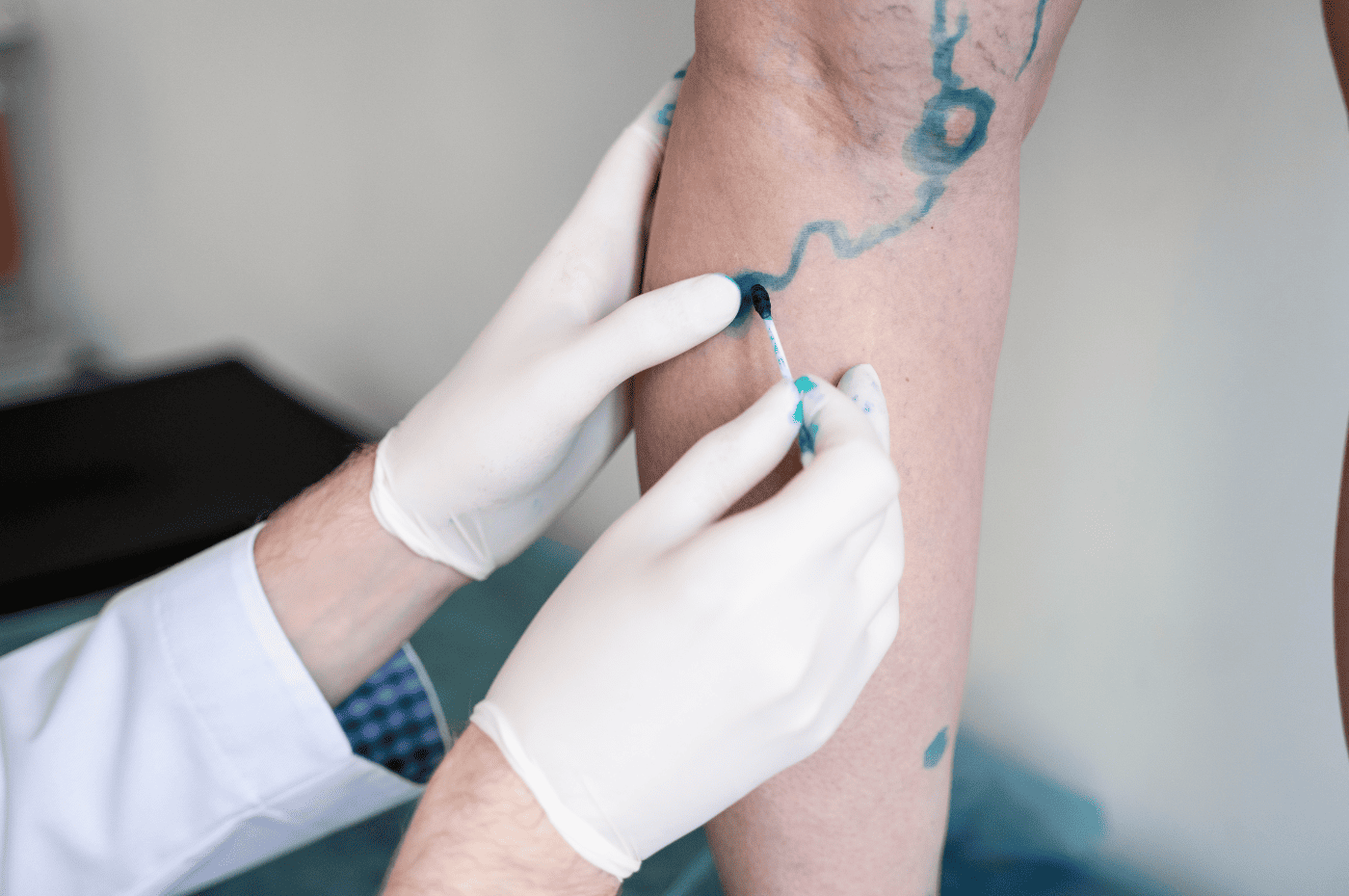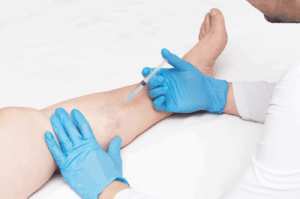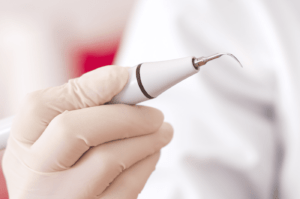Spider veins may look similar whether they appear on your face or legs, but their causes and treatments can be quite different. Facial spider veins often develop due to sun exposure, hormonal changes, or genetics, while those on the legs are usually linked to circulation issues and increased vein pressure. Understanding these differences is key to finding the right treatment. At Miami
Vein Institute, we offer personalized care and advanced solutions to help reduce the appearance of spider veins, so you can feel confident in your skin. Schedule a consultation today to explore the best treatment options for you!
Spider veins can be frustrating, whether they appear on your legs or your face. You might notice them as thin, web-like lines that seem to pop up out of nowhere, making you feel self-conscious or wondering what caused them. While both facial and leg spider veins share similarities, they have distinct causes and require different treatment approaches.
At Miami Vein Institute, we understand these differences and offer customized treatment options to effectively address spider veins in any area. Our goal is to help you feel confident and comfortable in your skin again.
What Are Spider Veins?
Spider veins are small, dilated blood vessels that form just beneath the skin. They can appear in a variety of colors, including red, blue, and purple, and often have a web-like or branched appearance. Unlike varicose veins, which are larger and often cause more noticeable symptoms, spider veins are typically cosmetic concerns and are rarely associated with significant health risks. However, they can still cause discomfort and self-consciousness for many people.
While spider veins are most commonly associated with the legs, where they are often visible on the thighs, calves, or ankles, they can also appear on the face, typically around the nose, cheeks, or chin. The causes, treatment options, and appearance of spider veins can vary depending on their location.
Spider Veins on the Face vs. Spider Veins on the Legs: The Key Differences
While both facial and leg spider veins share some common traits, several key differences distinguish them in terms of appearance, causes, and treatment approaches. Let’s take a closer look:
Location and Appearance
- Facial Spider Veins: These veins typically appear on the cheeks, nose, chin, and under the eyes. They often look like small, red or purple lines that form a web-like pattern, and they can be more visible due to the thinner skin on the face.
Facial spider veins are typically smaller in size and may be less pronounced than those found on the legs. - Leg Spider Veins: Leg spider veins often appear on the thighs, calves, or ankles and can be larger and more complex. They may have a bluish or purplish hue and can form a more intricate network or cluster of veins.
These veins are often more prominent, especially in individuals who are overweight or who have a history of standing for long periods.
Causes
- Facial Spider Veins:
Facial spider veins are often caused by environmental factors such as sun exposure, wind, and extreme temperatures, which can weaken the skin’s blood vessels over time.
Hormonal changes, genetics, and certain lifestyle habits like smoking or excessive alcohol consumption can also contribute to the development of spider veins on the face. - Leg Spider Veins:
Leg spider veins are most commonly caused by poor circulation and increased pressure on the veins, particularly in the lower extremities. Factors like prolonged standing, pregnancy, obesity,
and a family history of vein problems can all contribute to leg spider veins.
○ The pressure on the veins in the legs can weaken the walls and valves, leading to the development of spider veins over time.
Symptoms
- Facial Spider Veins:
○ Typically, facial spider veins do not cause significant physical symptoms. They are primarily a cosmetic concern, although some people may experience mild discomfort or a sensation of heat in the affected area. - Leg Spider Veins:
○ While leg spider veins are often asymptomatic, they can sometimes cause feelings of heaviness, aching, or fatigue in the legs, particularly after long periods of standing or walking. In some cases, leg spider veins can also be associated with more severe conditions like varicose veins, which can cause pain and swelling.
Treatment Options
- Facial Spider Veins:
○ Laser Treatments: Laser therapy is often the preferred method for treating facial spider veins. It uses focused light to target and collapse the veins, allowing them to be absorbed by the body. This treatment is non-invasive, requires minimal downtime, and is highly effective on the delicate skin of the face.
○ Sclerotherapy: In some cases, a mild form of sclerotherapy (injecting a solution into the vein) may be used for small veins, though it’s less common for the face. - Leg Spider Veins:
○ Sclerotherapy: This is the most common and effective treatment for leg spider veins. A solution is injected into the veins, causing them to collapse and eventually fade from view. Sclerotherapy works well on both small and larger spider veins on the legs.
○ Laser Treatments: Lasers are also effective for treating spider veins on the legs, especially for smaller veins or veins that don’t respond well to sclerotherapy.
○ Lifestyle Changes: For those with leg spider veins caused by poor circulation, improving circulation through exercise, weight management, and elevating the legs can help prevent new veins from forming.
Can You Prevent Spider Veins?
While it’s not always possible to completely prevent spider veins, there are steps you can take to reduce your risk:
- Wear sunscreen to protect your skin from UV damage, especially on the face.
- Maintain a healthy weight to reduce pressure on your veins.
- Avoid long periods of standing or sitting without moving.
- Use compression stockings if you have a family history of vein problems or work in a job that requires you to stand for extended periods.
Take the Next Step Toward Clearer Skin with Miami Vein Institute
Whether you have spider veins on your face or legs, treatment options are available that can help reduce their appearance and prevent spider veins from worsening. At Miami Vein Institute, our team of vein specialists will work with you to create a personalized treatment plan based on your individual needs.
If you’re ready to learn more about spider vein treatments and find out which option is right for you, schedule your consultation with Miami Vein Institute today. We’re here to help you achieve healthier, smoother skin!
Frequently Asked Questions (FAQ)
- What causes spider veins on the face?
● Sun exposure, genetics, hormonal changes, and lifestyle factors like alcohol consumption can all contribute to the development of facial spider veins. - Can spider veins on the legs be treated with laser therapy?
● Yes, laser therapy is an effective treatment for smaller spider veins on the legs, but larger veins may require sclerotherapy for optimal results. - Is sclerotherapy painful?
● Sclerotherapy involves minor discomfort during the injection, but most patients report that the procedure is well-tolerated. There is no downtime required afterward. - How long does it take to see results from spider vein treatments? – Results vary depending on the treatment, but most patients begin to see improvements within a few weeks after the procedure. Full results may take up to three months to appear.


